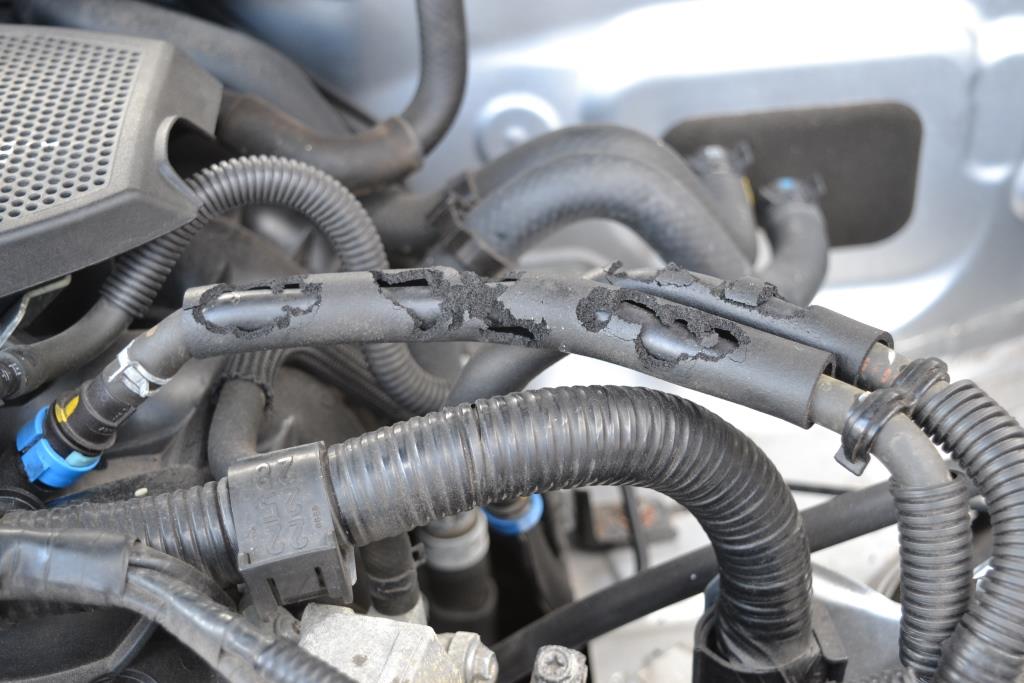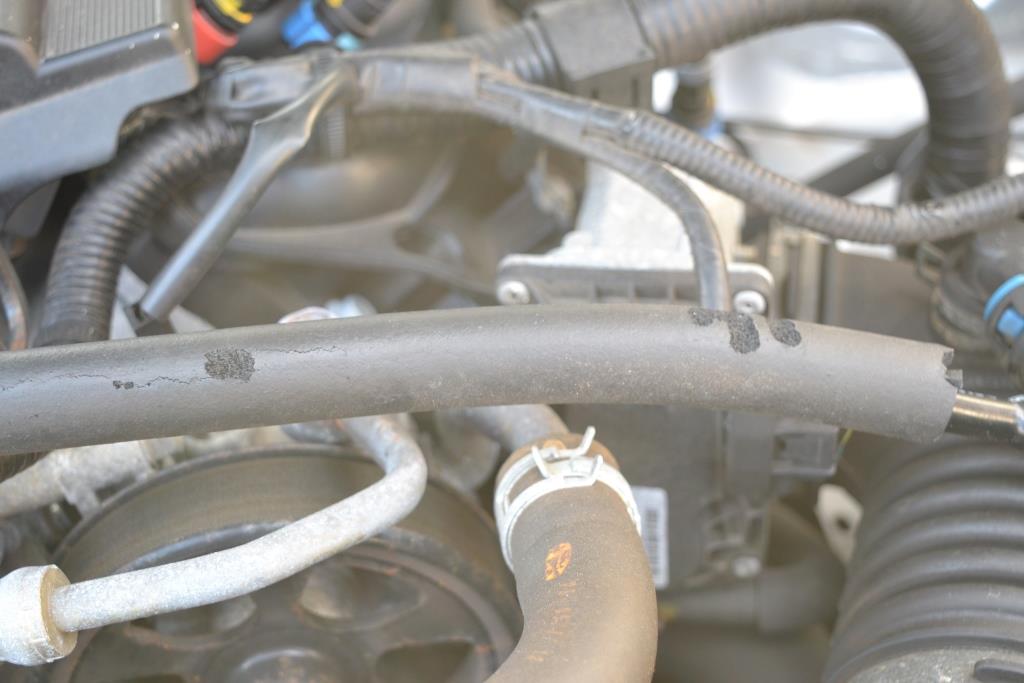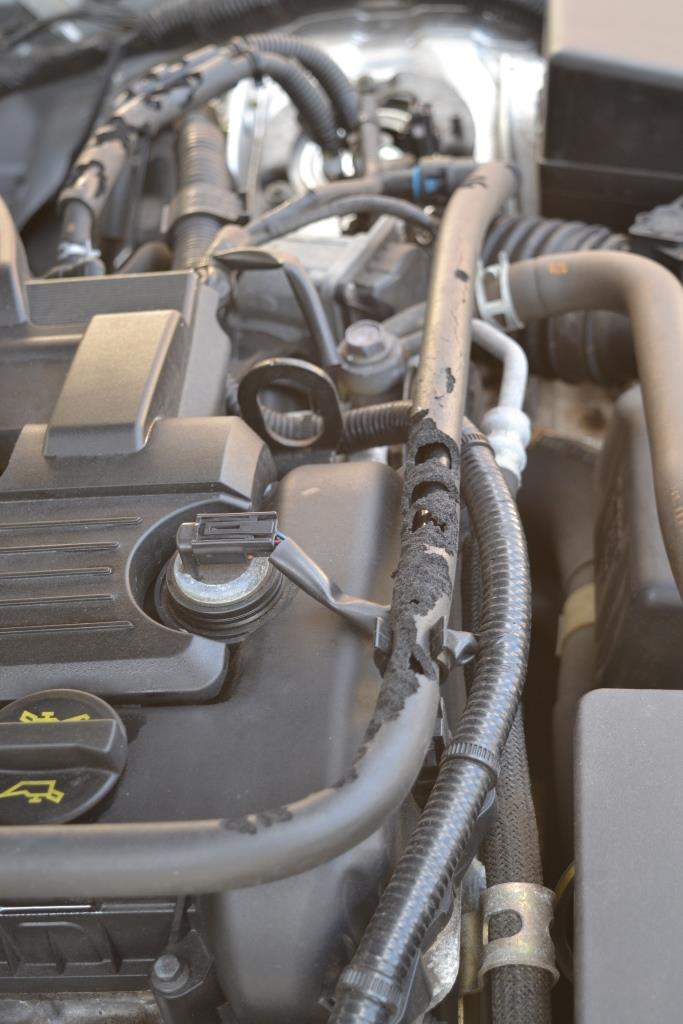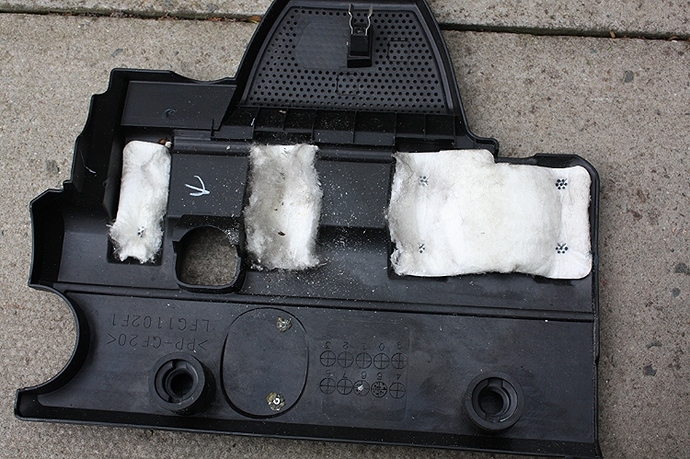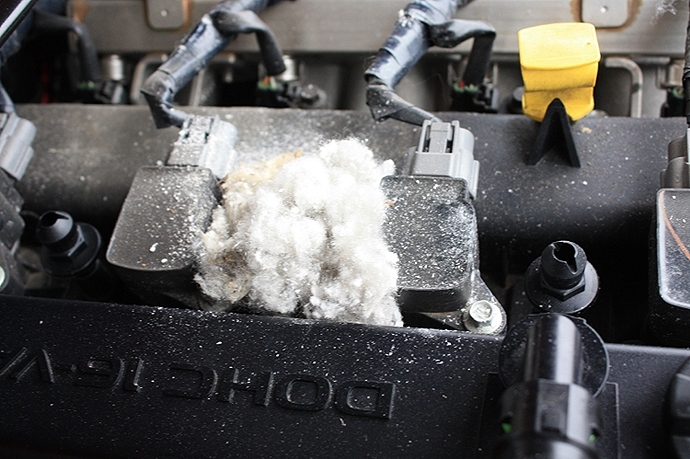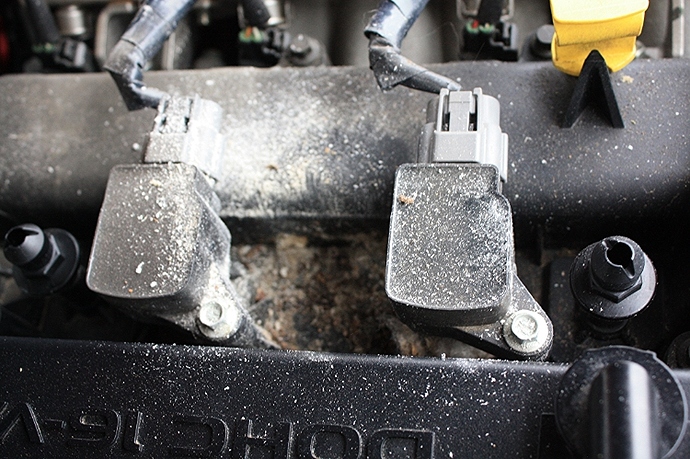I thought I’d just check my Mk3 in the garage after weeks of lockdown. It’s been connected to a battery conditioner so the bonnet has been ajar for the cable. I was horrified to discover that mice had been in the engine bay chewing up the foam covering of some pipes (perhaps for bedding). The damage only seems to be on the foam itself rather than the body of the pipes but please can anyone tell me if this will prevent the car from running? And is it possible to obtain just the foam covering or must the entire pipes be replaced? Thanks folks…
You can get some heat/sheath wrap to replace that. It protects from heat generated from the engine on the vital lines.
Do whip that plastic engine cover off though for a look see, it just pulls upwards. I had mice chew the white padding under there, they made a nest beneath it between the plug coils.
Check they haven’t made a nest somewhere in the garage, tell tale signs of course are the droppings. A different time I found a nest behind some flatpack furniture I’d stored in the back of the garage. They had started to chew the corner of the boxes and the chipboard on one panel, also decided they wanted to chew some tin foil to use in the nest too.
Thanks Mick. Poison was put down sharpish and my wife found a dead critter in the garden with accompanying screams!
That’s one of my worst nightmares! Rightly or wrongly, maybe a mice expert can confirm, I always leave the bonnet open on my MX-5 when parked in the garage. My thinking being letting the light into the engine bay will put mice off going in there. My worry is them getting to the wiring harnesses.
Check under the plastic engine cover, there is white sound deadening there that mice seem to like, they’ve been know to gnaw the coil pack wiring too while there’re there.
Edit… What MickAP said then… Car will be OK to drive assuming it’s only the coverings that are affected.
Companies like Sinclair & Rush sell foam tubing that could be cut along its length and reglued over after removing the old foam. If not worried about originality you could hide the damage with some split sided convuluted plastic hose cover.
Maybe it would be a good idea to invest in ultra-sonic scarer(s). I’ve used them for years in the attic and garage after chewing incidents, no problems since. My neighbour had a problem with mice in his attic and I suggest he did the same and the problem disappeared within days. Just a thought.
PS: The open bonnet won’t be the point of entry, they climb in from underneath.
Yes, but if it’s light above they won’t want to climb up from underneath will they? My logic anyway.
This is what I found upon removal of the engine cover. Pic 1, the white padding should cover the whole length. Pic 2, the padding arranged under the cover. Pic 3 the various remains left by the mice.
I didn’t find any mice but most definately the evidence, not noticeable until I removed the cover to investigate the white powdery fall out.
While the mental image of mice with ropes and ladders climbing up the exterior of a car to access its otherwise lightproof engine bay via a conveniently open bonnet lid has a Disney cartoon-like appeal I think the reality is more boring:-
- I’m pretty sure that most cars that suffered engine bay mice damage did not have their bonnets open, and the OP says his was “ajar” which wouldn’t actually let much light in.
- The underside of engine bays are not lightproof, or anything else proof.
- Mice, being opportunist critters, would not choose to scale smooth, shiny exterior body panels when the underside of the car provides them with ample climbing aids in the nature of wheels, suspension, springs, brackets, pipes etc.
I’ll stick with my version of events.
Yes, my suggestion was to leave the bonnet open…
Thanks for the clarification! Now that does make sense. 
Years ago I worked for a well known digger company. We had a Vauxhall Vectra pool car, a diesel turbo. It was used to commute between the airport and the factory but sometimes it wasn’t driven for a week or so. A colleague drove it one day and found it wouldn’t go much above 45 mph. He took it to the company garage and found it had a damaged turbo hose. They replaced the hose and normal service was restored. A week later I went to drive the car, which had been parked back in its usual place. I decided to check the oil level. I lifted the bonnet and found a big female rabbit sitting on the steering rack. It had built a nest there. It had chewed up the same turbo hose and this time it had also chewed off almost all of the insulation inside the engine bay and was sitting on it. Another car owner parked his petrol engined Honda round the other side of the hangar for a few weeks. When he came to try to drive it away, it wouldn’t start. A rabbit had eaten all the ignition leads.
They took up residence in my mk1,I first found tell tale nibbling on a bag of bird seed kept in the garage// decided to check out the car fearing the worst ! but luckily they had not chewed components to make a nest. However there were bird seed remains in the engine bay up by the bulkhead and some where the soft top meets the rear panel. I set traps and caught what I imagine was the whole family? No further problems since the weather has improved. Before retirement I worked in a Landrover dealership and chewed engine bay wiring was a nightmare and not uncommon. Be lucky
